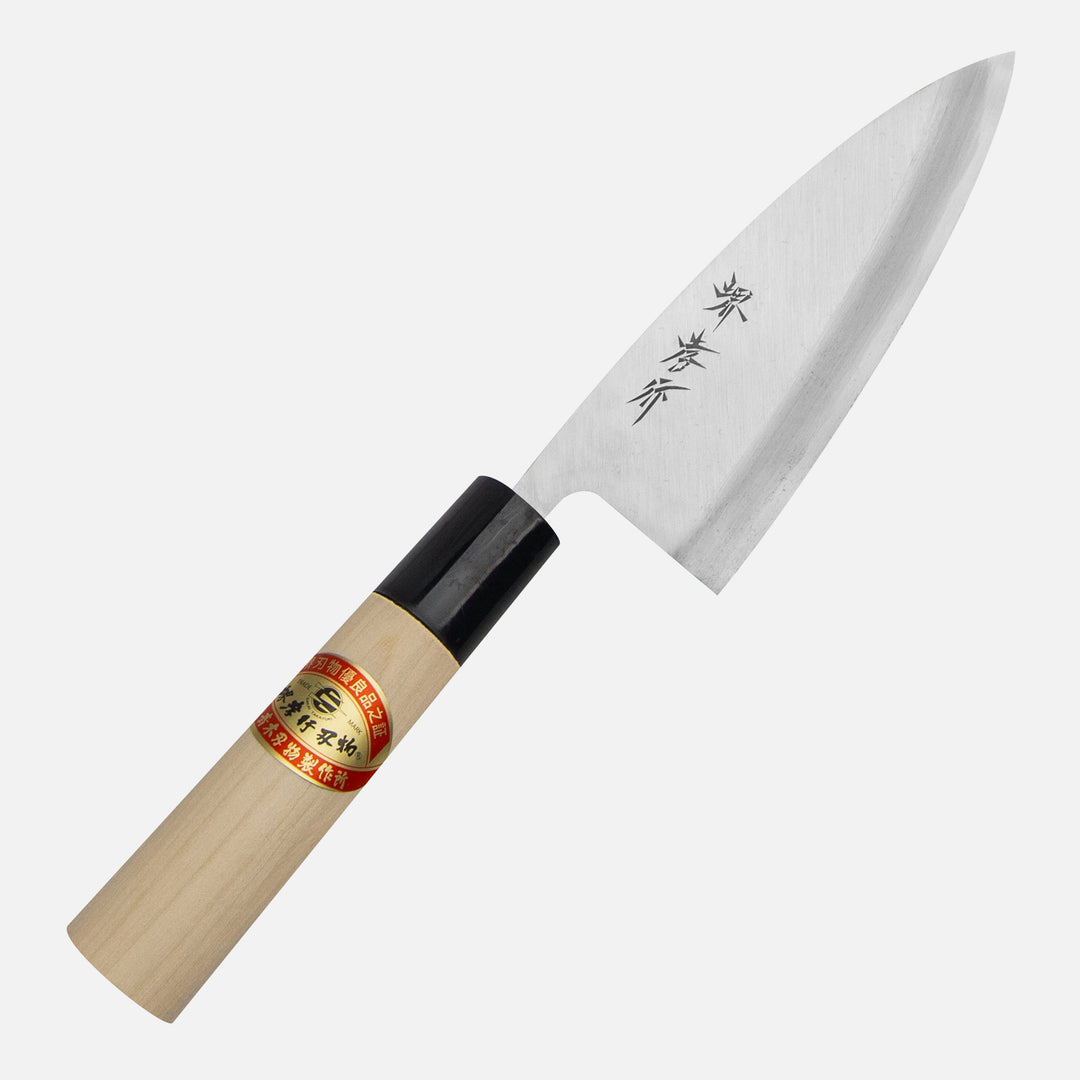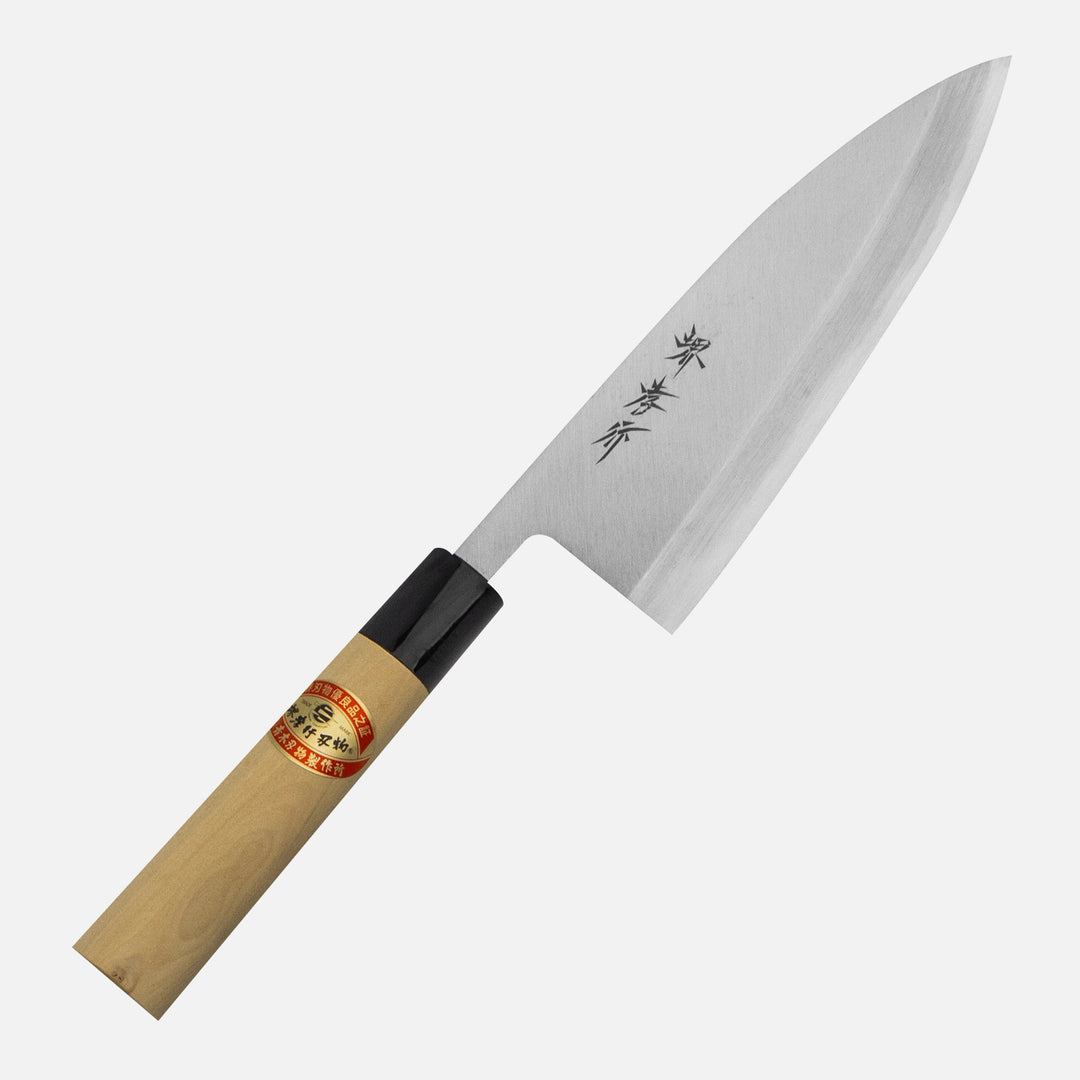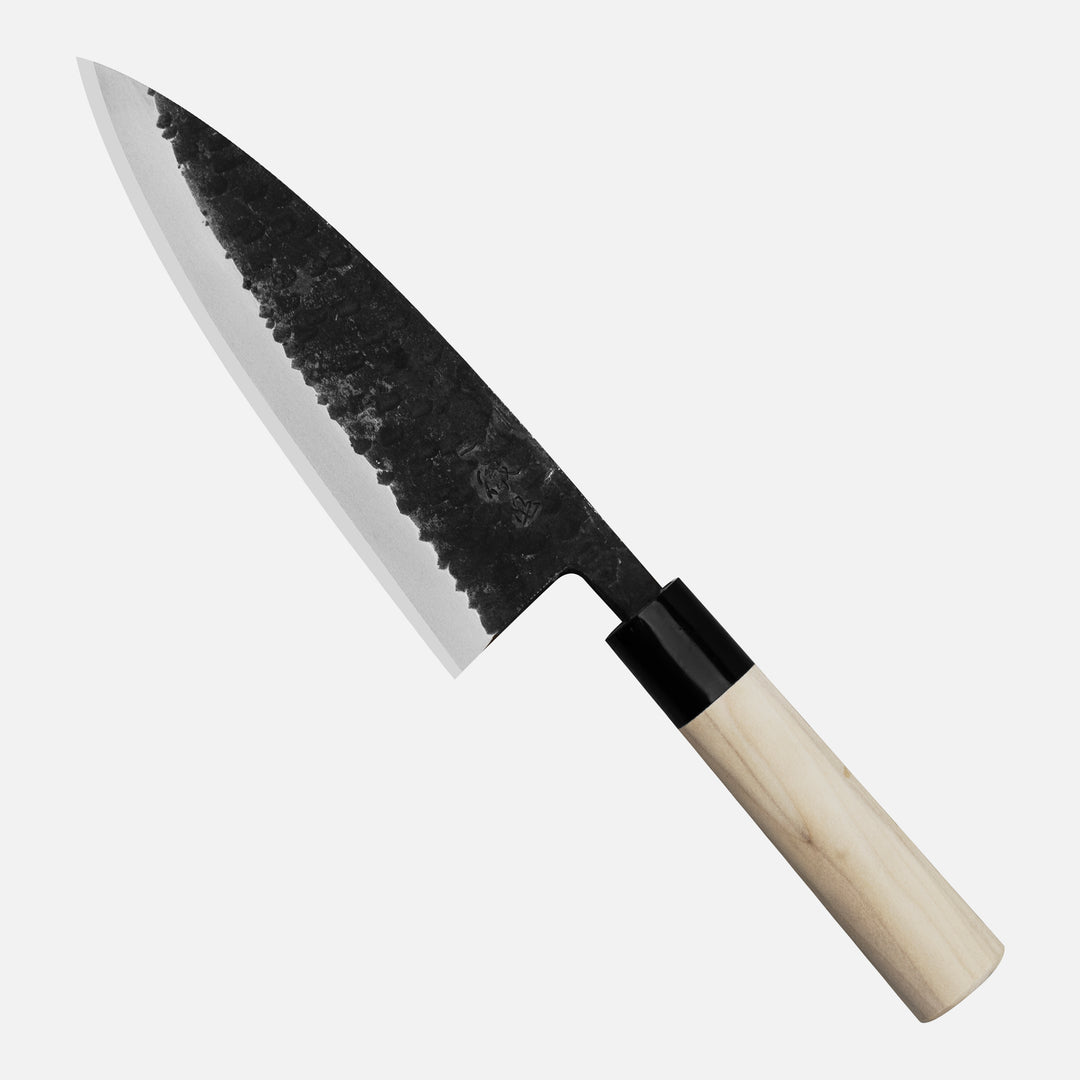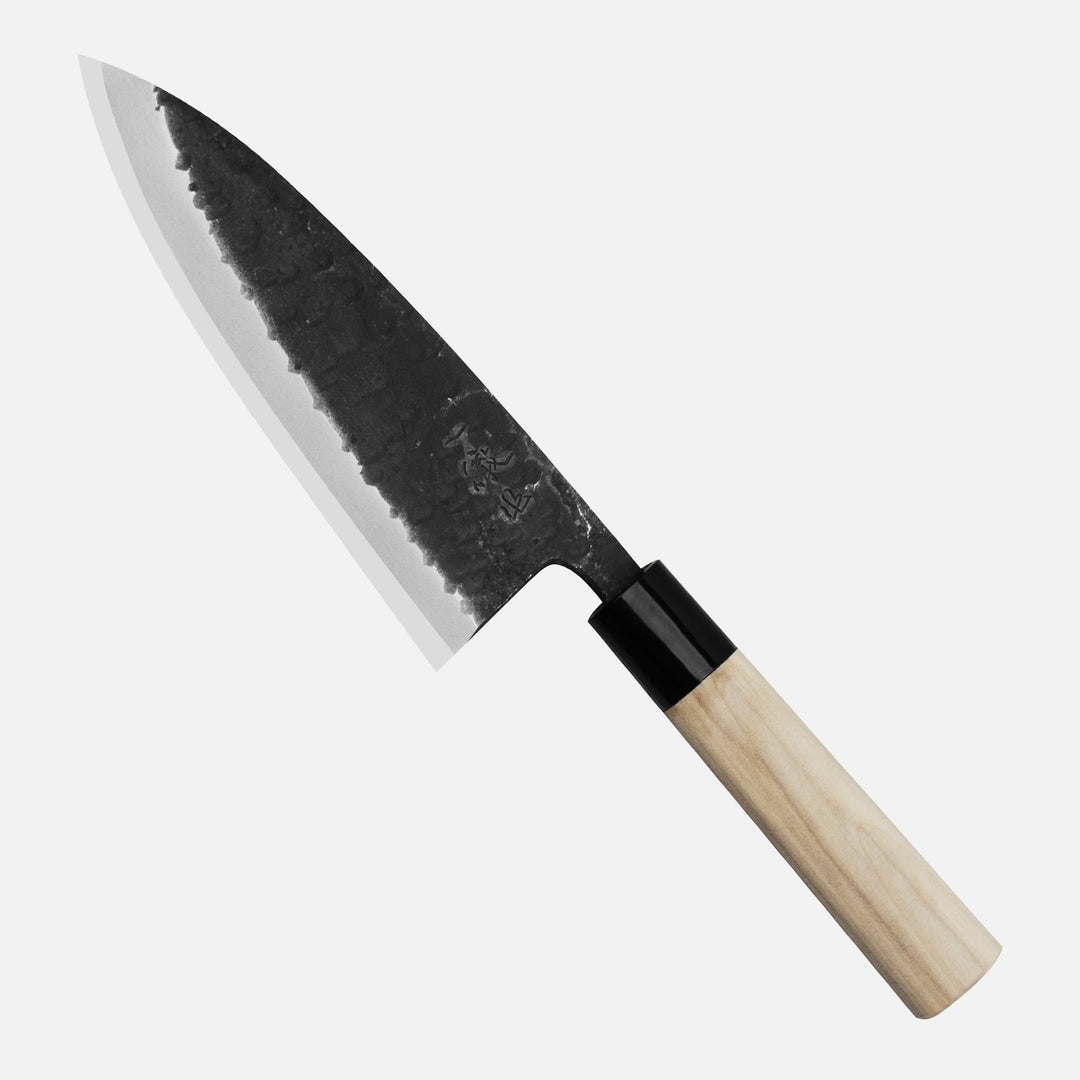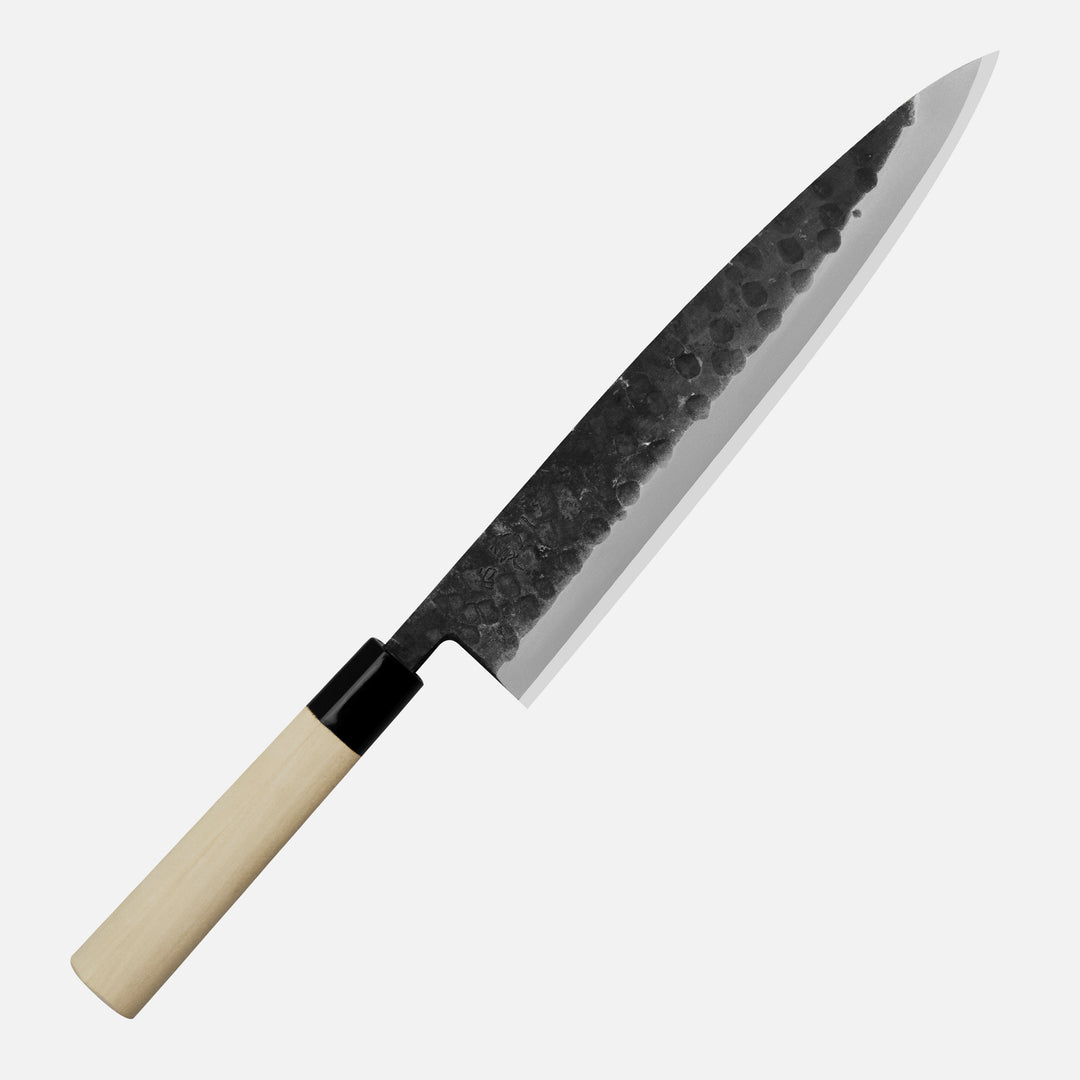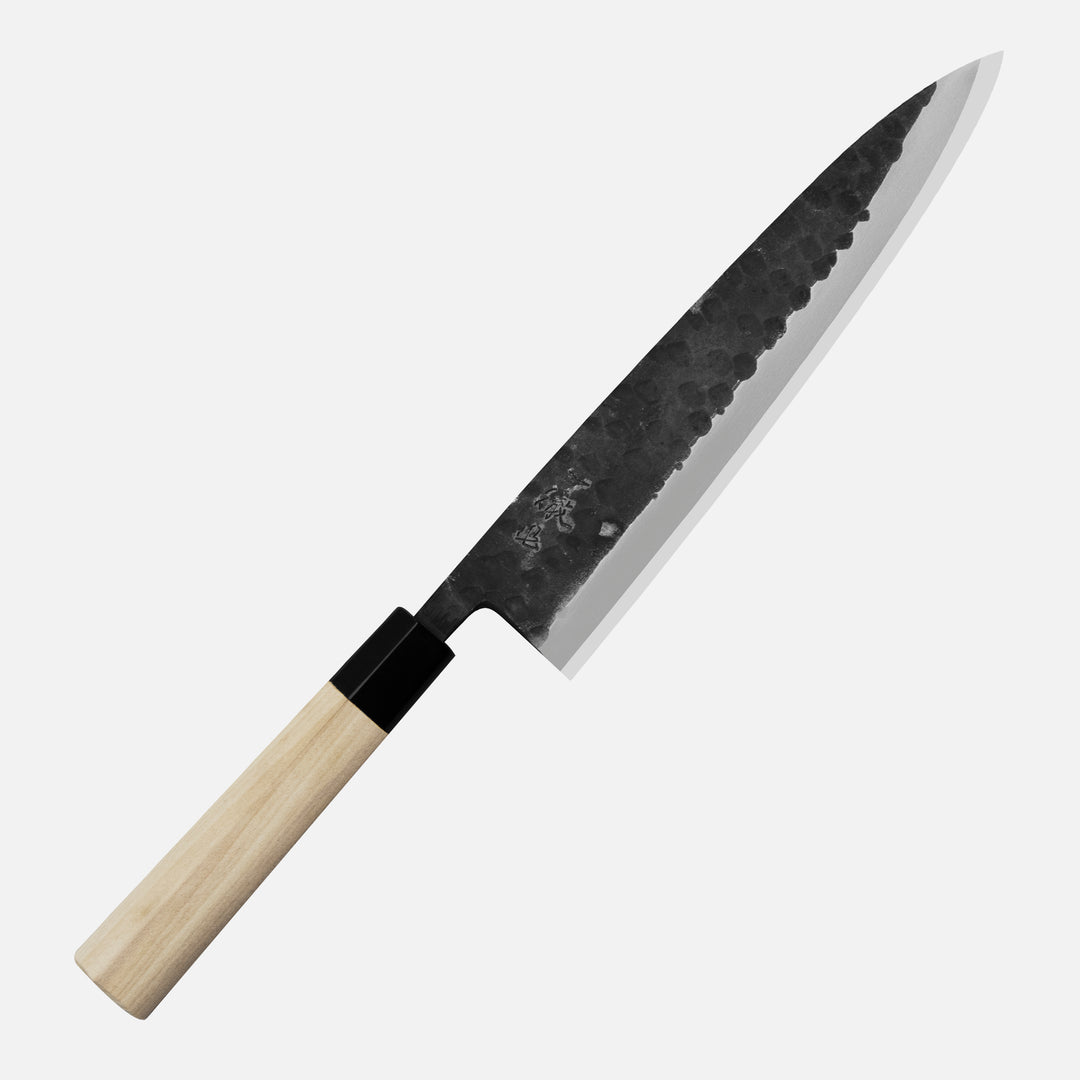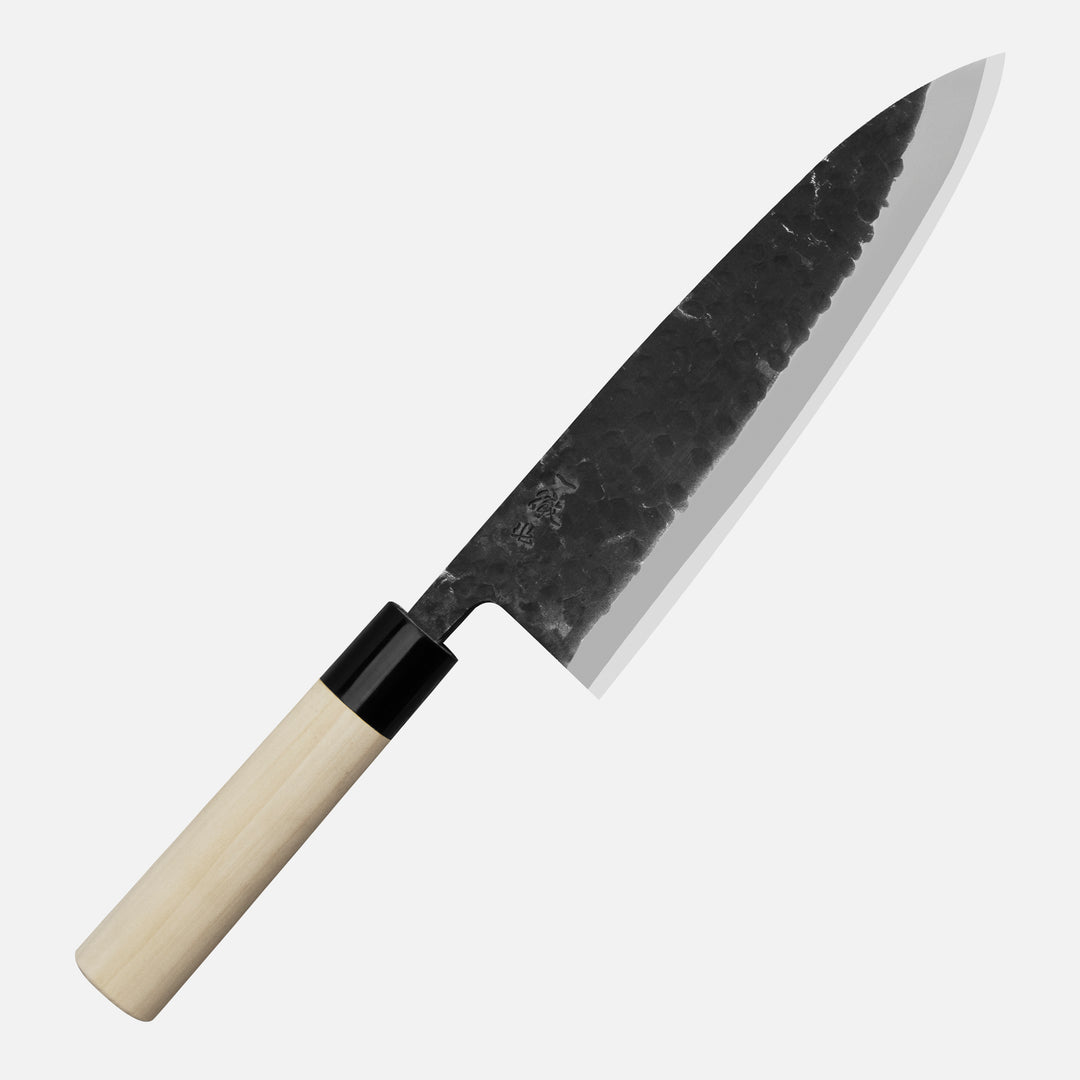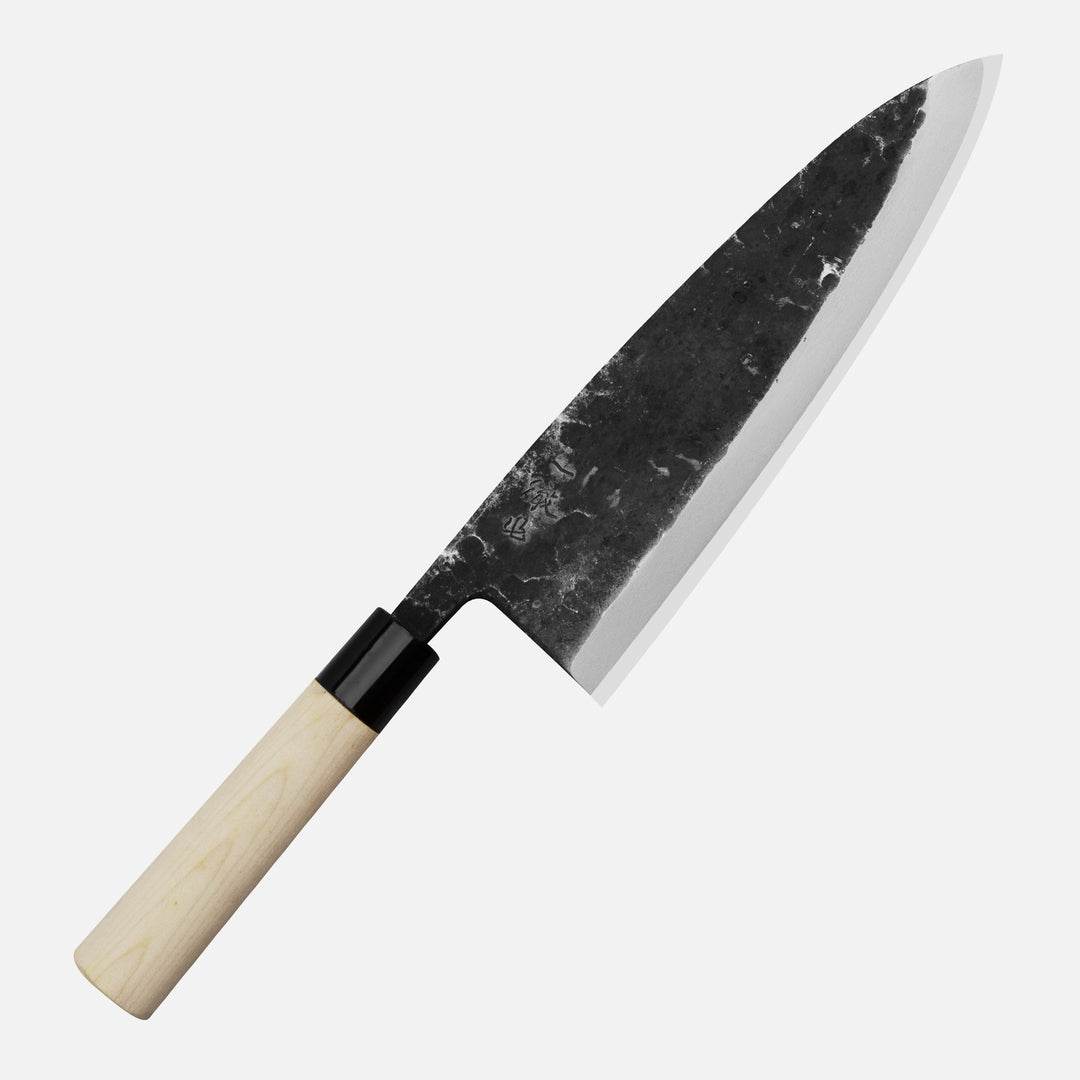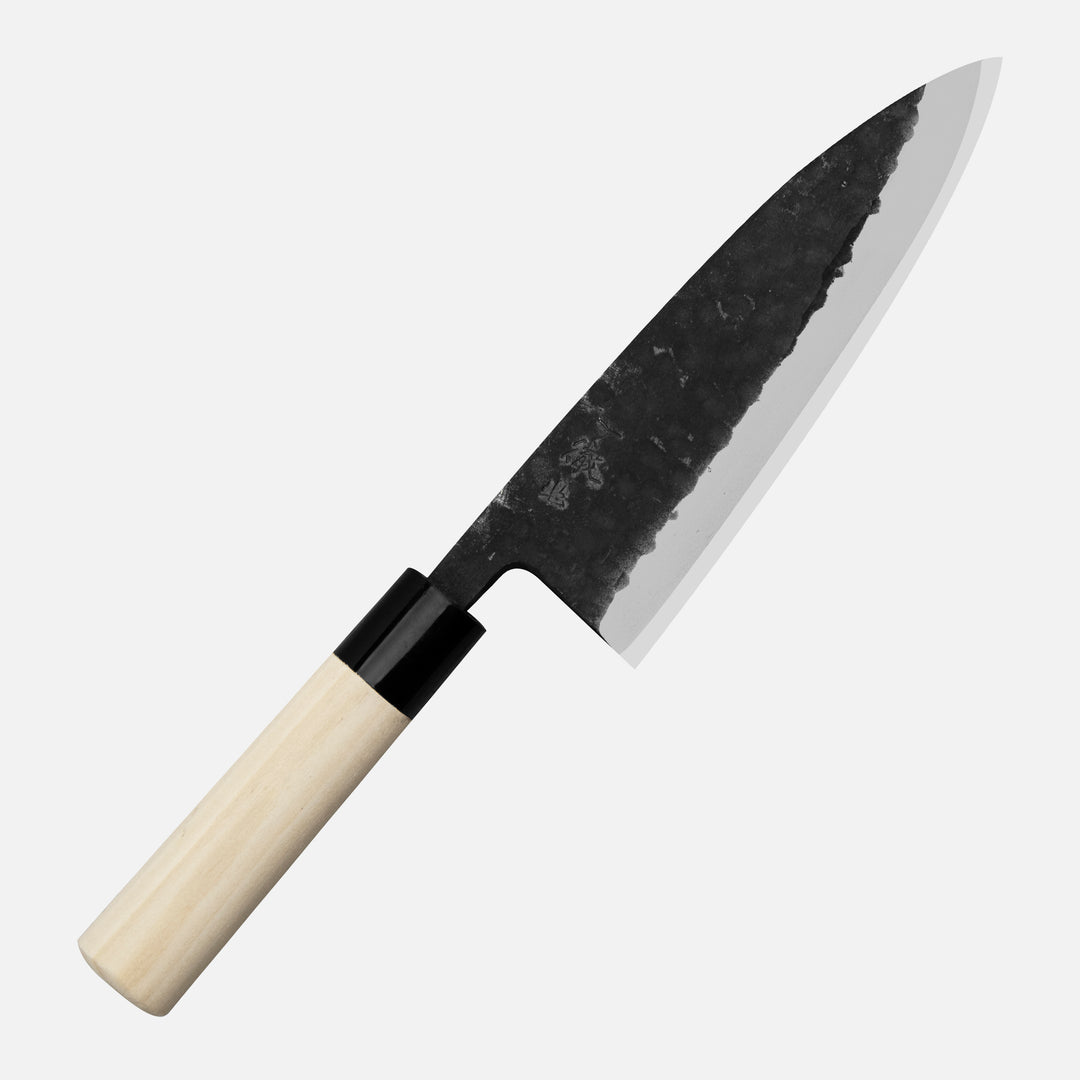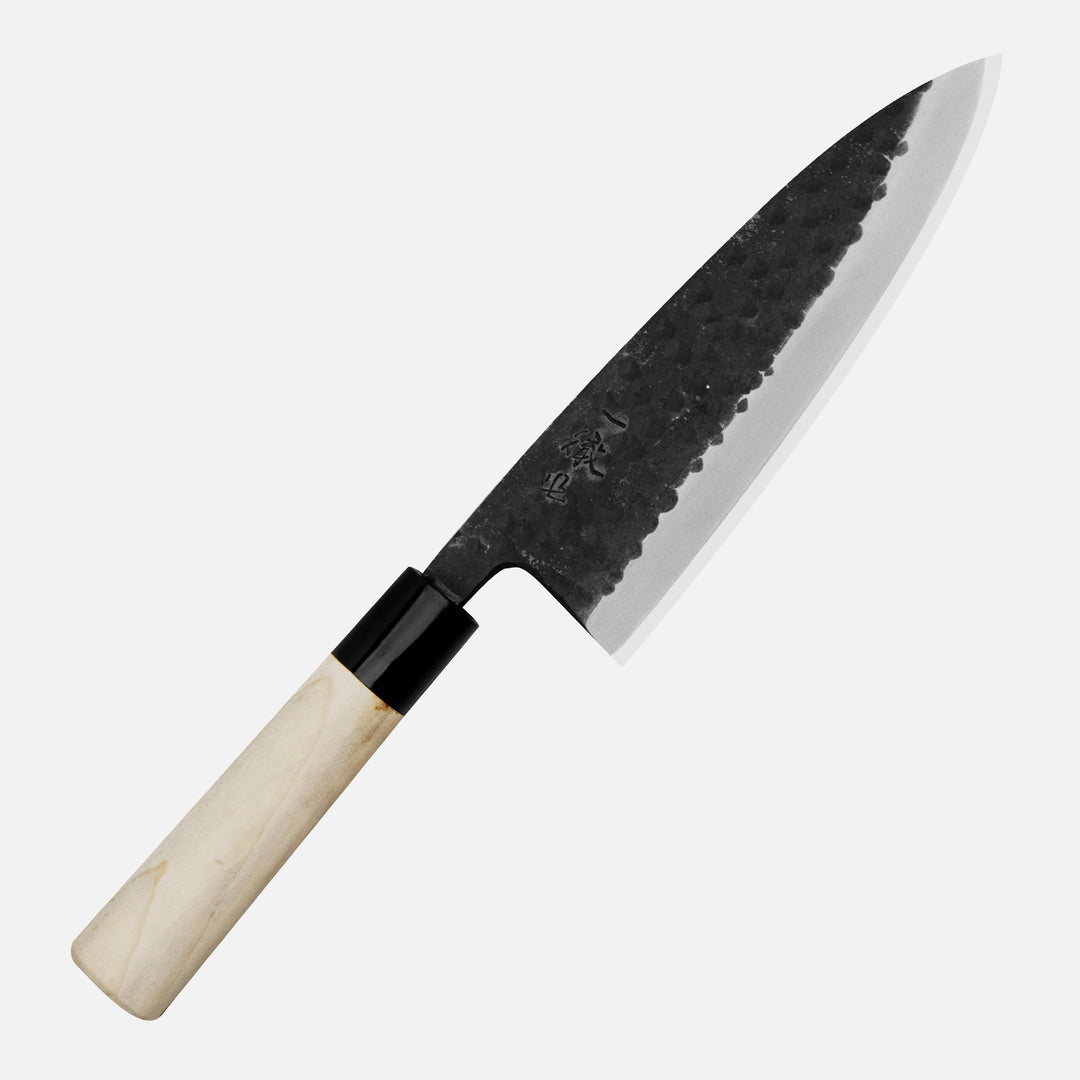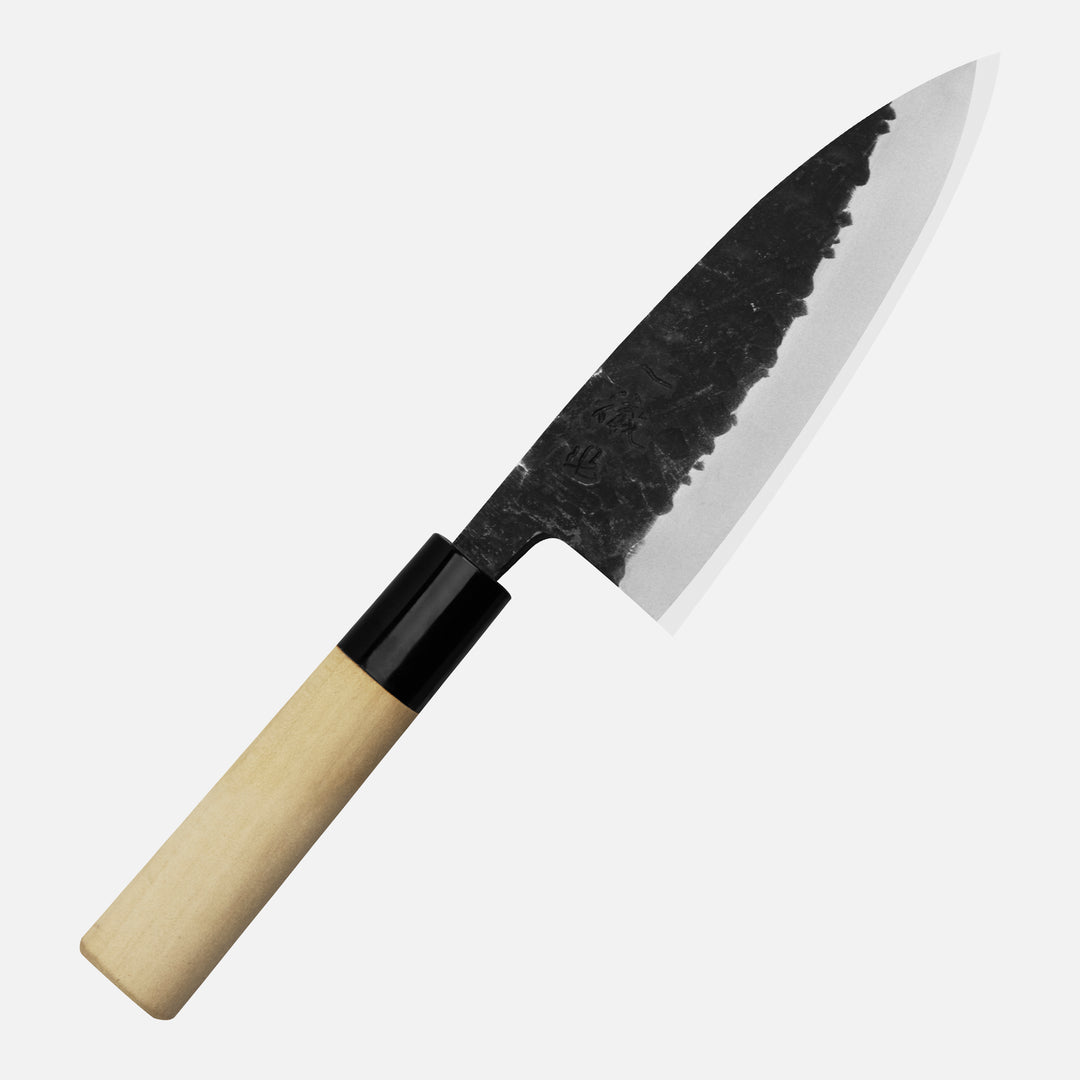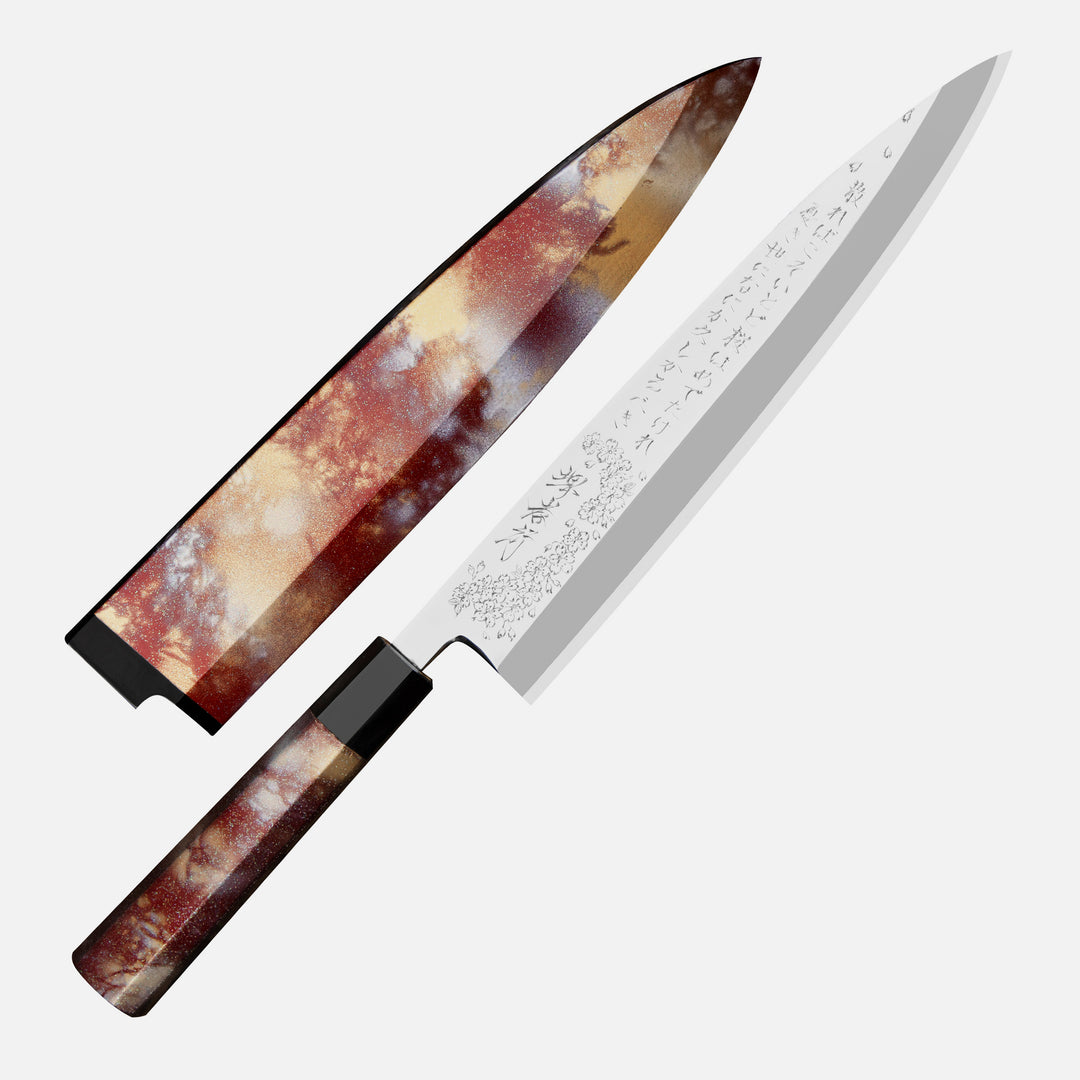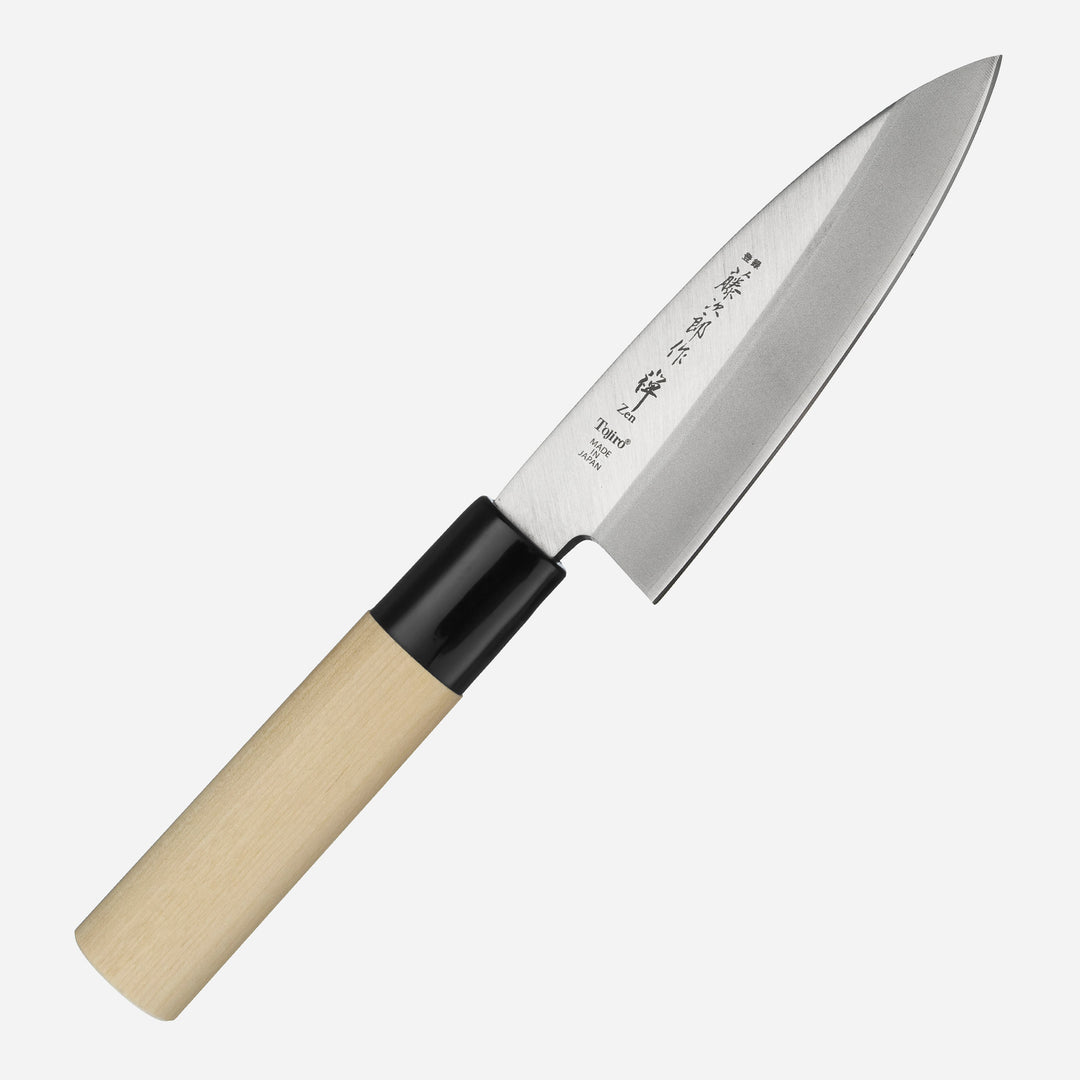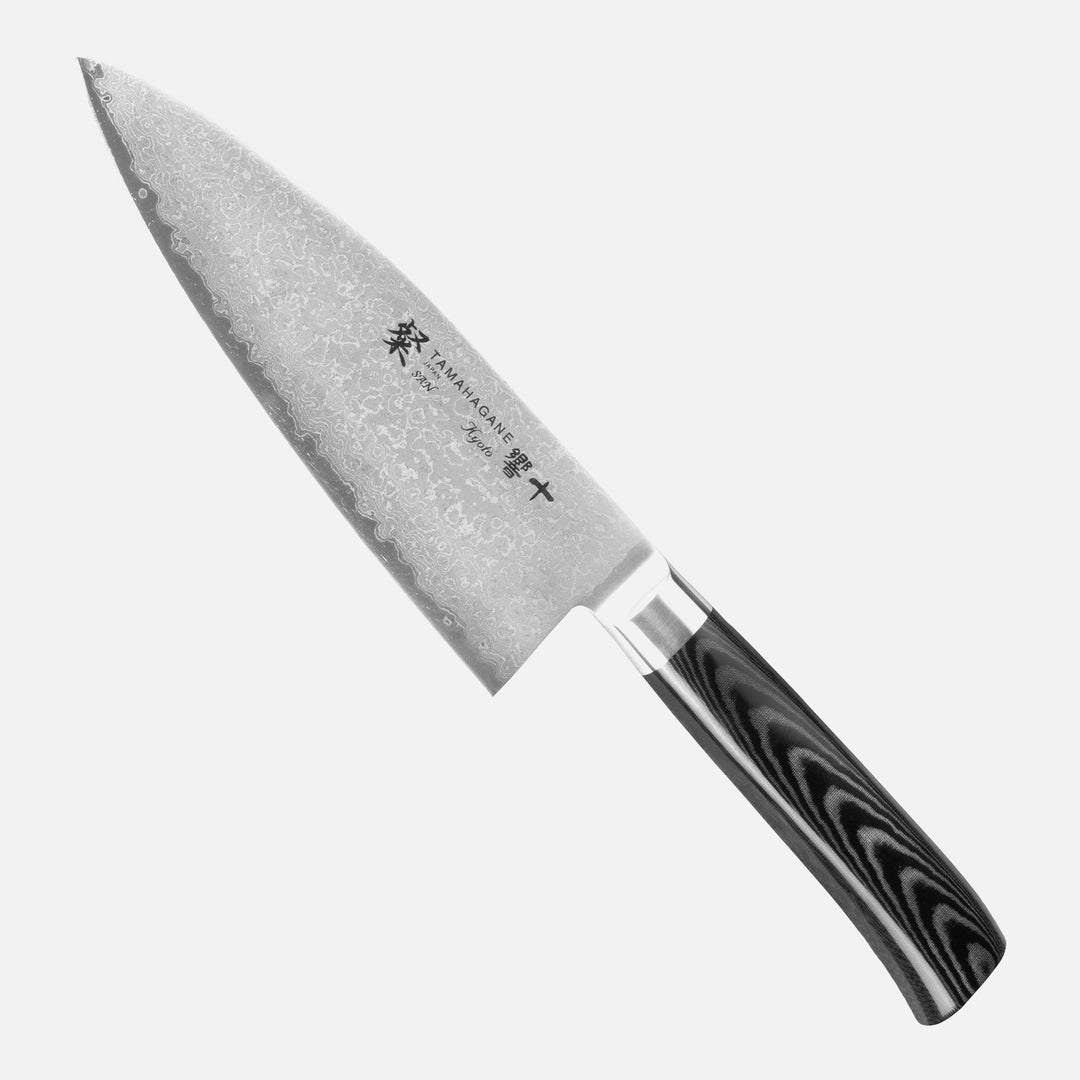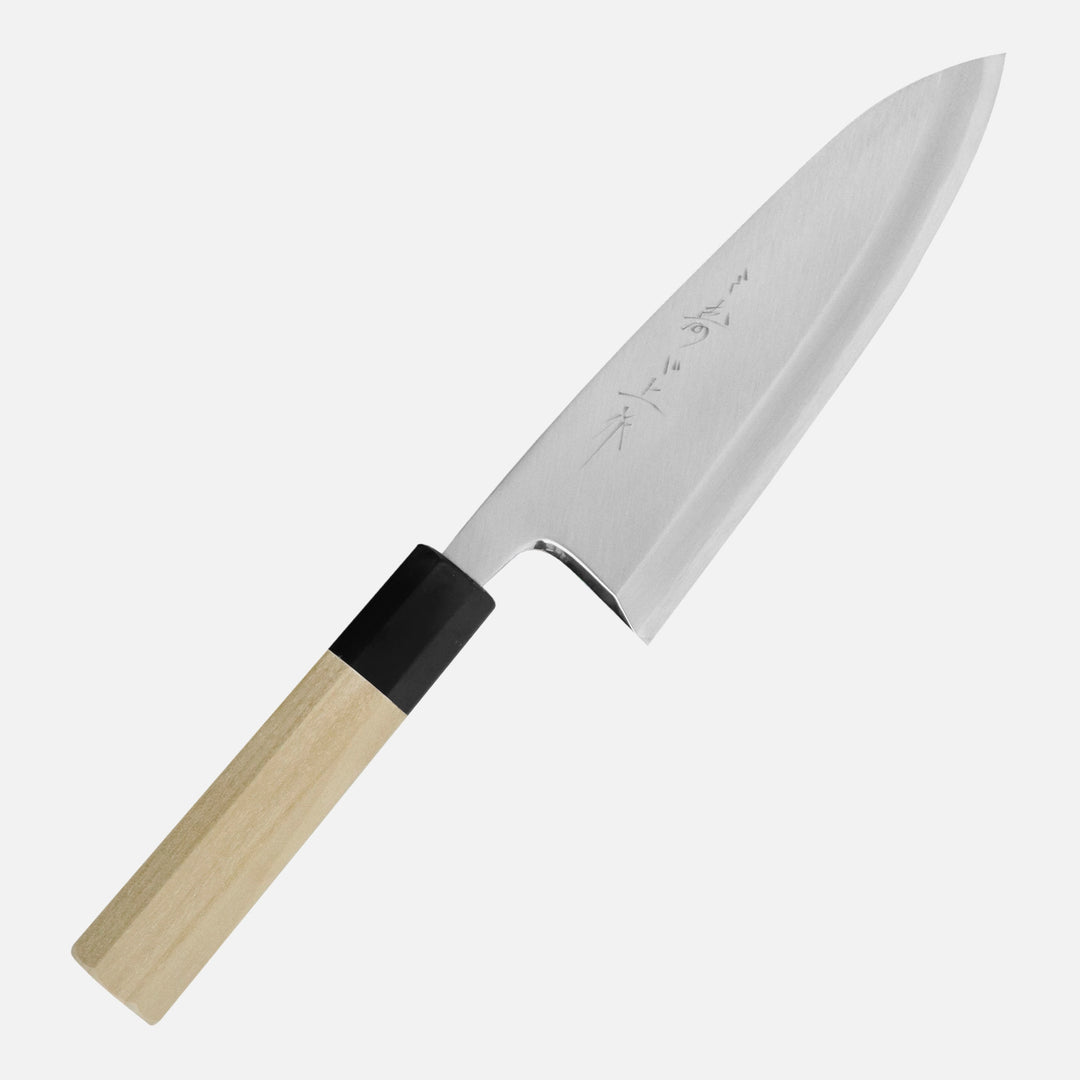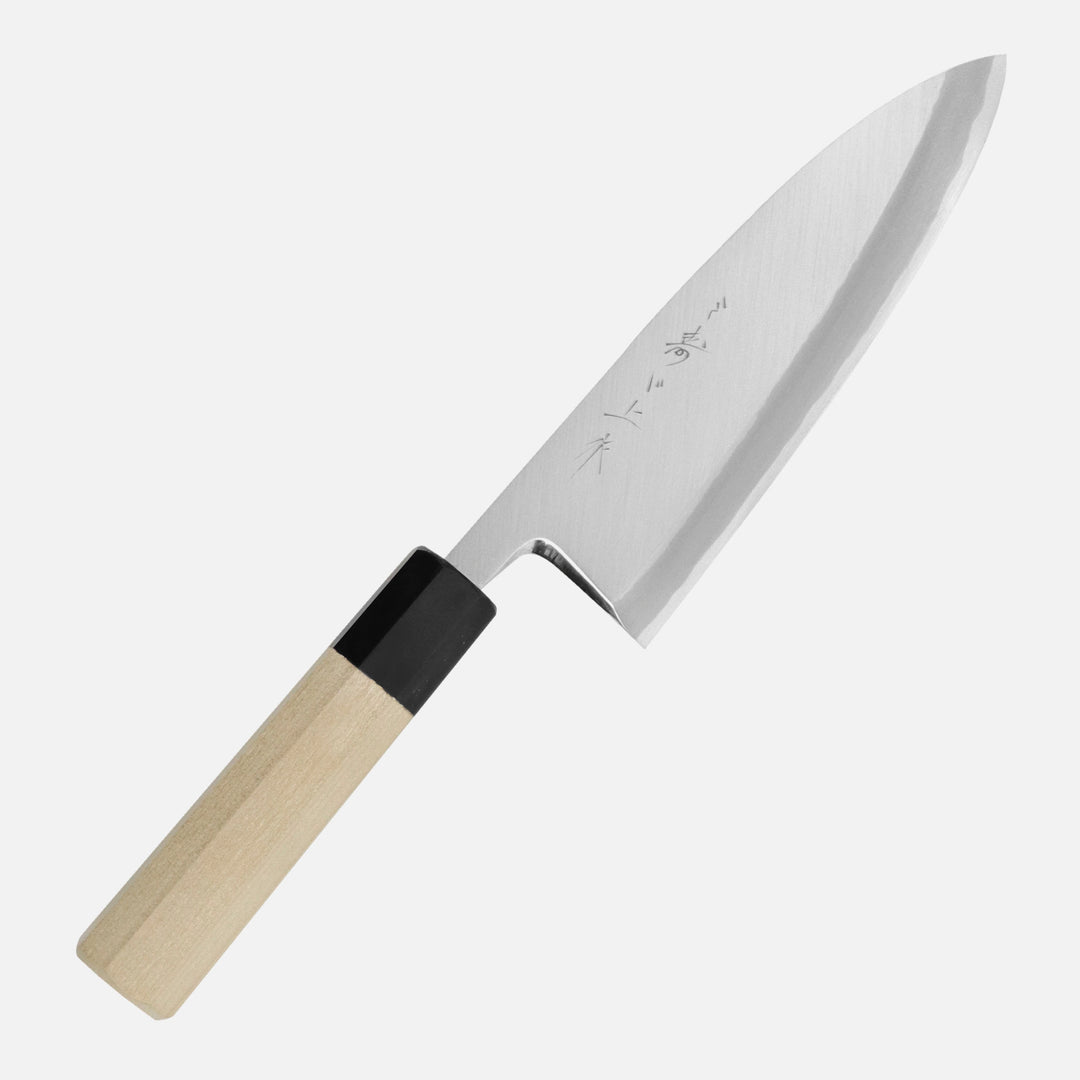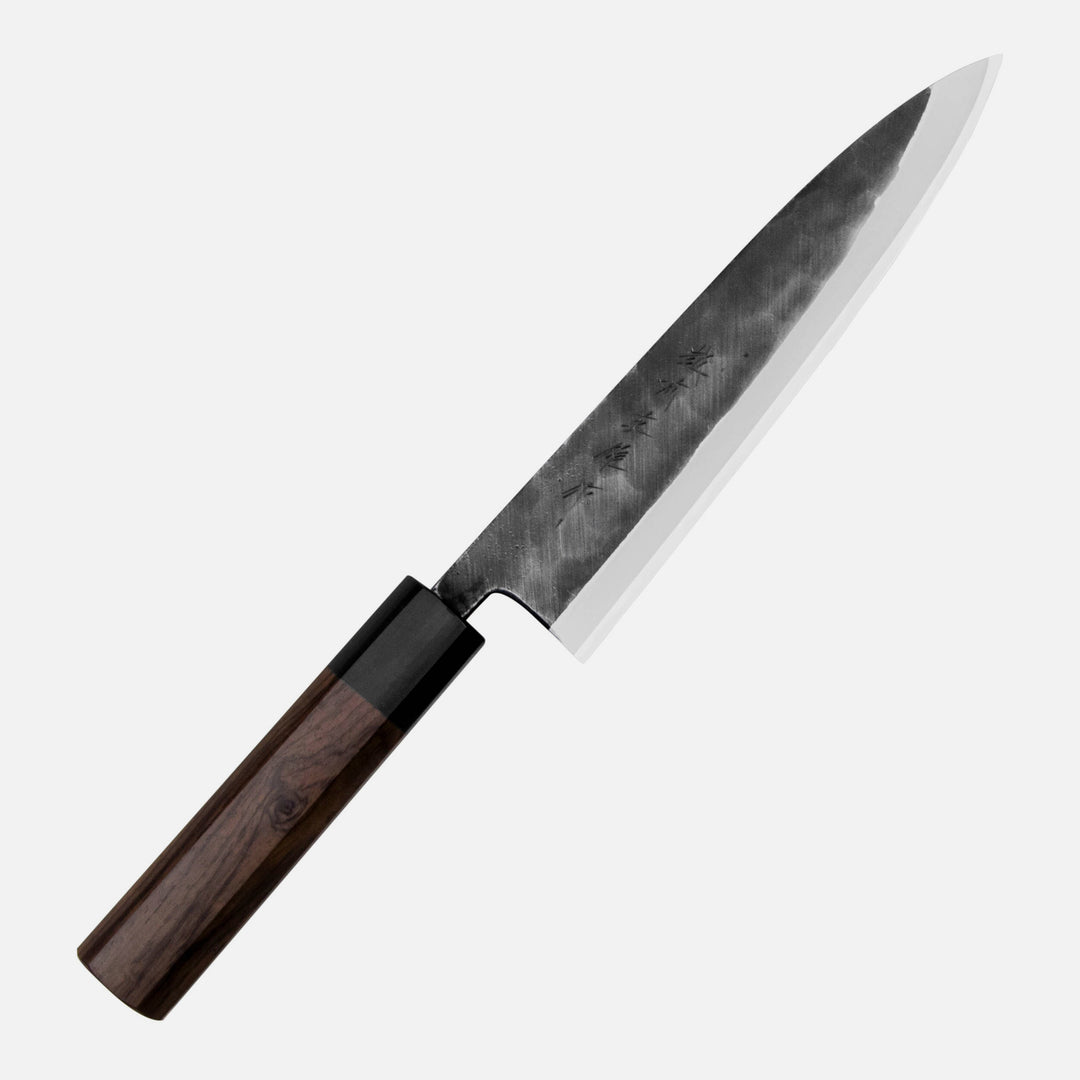Deba Knives
Deba is the basic knife used for cutting, filleting and portioning fresh fish. It is also one of the three knives that are essential in cooking washoku Japanese cuisine. The sharp construction, as in other knives used in traditional Japanese cuisine, is two-layered. The knife itself is much thicker than the average, and its cut is stronger and allows you to cut bones or fish heads without risking damage. It should be noted that the heel area of the knife is designed for heavy tasks, and the closer to the tip, the more delicate the knife is, which makes it easier to work with delicate fish meat.Traditionally sharpened on one side with a shirogami or aogami carbon steel core, it is extremely sharp. Compared to other knives, it stands out due to its thickness and weight, which allows it to withstand harder work compared to other knives. A thick and strong heel allows you to cut the bones, and the blade, tapering to the tip, is dedicated to filleting without the product sticking too much to its side.
Deba comes in many dimensions, so its size should be matched to the fish that we are going to produce. The blades are from 16 cm to 33 cm long. The handles are as massive as the knife itself, usually round or octagonal, made of natural wood with a plastic ring or buffalo bone. Handles made in a European way are very rare.
Other versions of the basic deba are:
- Ai-deba, which is lighter and more delicate than the classic deba
- Ryo-deba / yo-deba Double-sharpened debas,
- Miroshi deba, which tries to combine the functions of deba and yanagiba,
- Ko-deba / Ajikiri - A smaller version of the deba with an 8 - 14 cm blade.
The steels used for the production of this type of knife are usually slightly lower-hardened due to their intended use, or the steel is used with a slightly lower amount of carbon. But this is not always the case. We can find doubles made of shirogami steel, as well as Aogami steel, both in the Ni-mai double-layer construction and in the Honyaki selectively hardened construction.


